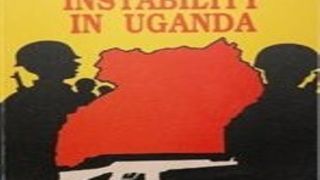
Reviews & Profiles
Prime
Book review: Questioning Dr Obote’s place among the greats
What you need to know:
- Along with several dissidents, including the late Eriya Kategaya, they plotted on how best to remove Idi Amin from power
Title
The Roots of Instability in Uganda
Author
Samwiri Rubaraza Karugire
Pages
121
Price
Shs7,000
Where:
Aristoc Booklex.
HISTORY
The Roots of Instability in Uganda”, Prof Samwiri Rubaraza Karugire’s 1988 book (a third edition came out in 2003), recalls to mind a story.
In the late 70s, my father—Ben Matogo—was head librarian at the University of Zambia while Prof Karugire was Head of the History Department at the same university. Along with several dissidents, including the late Eriya Kategaya, they plotted on how best to remove Idi Amin from power.
After several meetings, however, they came to the conclusion that having Prof Karugire at their smoke-filled gatherings was counterintuitive. That’s because Prof Karugire was too bare-knuckled. So the dissidents simply stopped calling him for meetings. And thereupon, their meetings, although still heated with disagreement, became less disagreeable.
“Sharp mind, sharp words,” is how Kategaya described Prof. Karugire. In this book, Karugire loses no time in validating Kategaya’s words. “This is not an ‘objective’ study of Uganda’s recent history since ‘objective’ history of any country only exists in the imagination of those who pretend to write it,” he writes.
This sets the tone for the rest of the book, filled as it is with tendentious views to the extent that it reads more like a position paper than a dispassionate rendering of history. However, there is much that is invaluable in this book.
In its opening chapters, Prof Karugire dives into how Uganda was colonised with the British instituting a Kiganda model of governance over the whole “Protectorate”, which was what Uganda was called.
This Kiganda system consisted of a hierarchy of chiefs in descending order of their seniority, namely, and respectively, the county chief, the Sub-county chief and the parish chief. Beneath the parish chief were miscellanies of minor chiefs who never received an official salary but were rewarded with beer, labour et cetera. The British explained their preference for this system of governance by claiming they wanted to rule through indigenous institutions and rulers, under the magisterial supervision of The Crown.
However, the territories which became British “dependencies” composing Uganda had a duality of institutions with regard to systems of governance.
Some were centralised and others segmentary, so a uniform approach to governing Uganda by using the Kiganda system of rule as a fulcrum of control was disingenuous, even as it worked well.
In fact, it worked so well that it is hard to call Uganda a “dependency” under the British since Uganda raised sufficient local revenues to meet the expenses of running the Protectorate. Oftentimes, too, the Ugandan Protectorate had a balance of payment surpluses which served as aid to England.
Later, Prof Karugire shows that Britain sought further to orient the Protectorate’s economy to the needs of the British economy. A pyramid, with Ugandans at the base, shaped this economy with Africans as underpaid cash crop producers (majorly cotton and coffee), while processing and marketing of the same was done by the Indians and Europeans courtesy of a series of colonial regulations which bent the arc of economic justice towards unfairness.
However, this cash cropping was discouraged in the north and Kigezi which were developed as labour reserves and thus served as conveyor belts for the armed forces. Uganda, by independence, was a sum of her parts.
The British system of divide and rule left the different parts of the country in administrative isolation of each other. So disunity hinged on regionalism and religiosity was nurtured. A gathering storm, as Prof Karugire dubs it, then rises to a whirlwind.
Prof Karugire, here, imputes ignorance on the person of Milton Obote who, he believed, did not know the difference between feudalism and Kingship.
Believing the Baganda should be cut down to ‘size’ (whose size, Prof Karugire cheekily asks); Obote did great violence to the Republic he sought to build.
Prof Karugire also debunks Prof Ali Mazrui’s view of Obote as “a brilliant politician and one of the most fitted politicians modern Africa has produced.”
Obote, Prof Karugire writes, engendered a state where “unsuccessful UPC politicians were made district commissioners; relatives of ministers embezzled public funds with impunity.”
With the employment of the army as the last bastion of his power, Prof Karugire says Obote paved the way for the emergence of Idi Amin as an indelible stain on the country’s conscience. Prof Karugire explains that the mistakes of Uganda’s post-colonial leaders were due to a false conception of history.
According to Prof Karugire, Obote’s belief that the Baganda were obstacles to “national unity” was a prime example of such a false conception.
All told, Buganda for centuries attracted foreign talent to its court. Prof Karugire adds that the greatest Ugandans nationalists, such as Ignatius Musaazi, were Baganda. Had he lived, Karugire might have become a “court historian” serving the state or might have gone on quoting Ivar Lissner, in irritation to the state.
“Doomed to the fate of all tyrants, the (Roman) Emperors everlastingly shivered in their shoes. Their nights were made hideous by memory of bloodshed, poison and judicial murder. They could scent conspiracy everywhere. More and more spies had to be employed. Every wall had ears. Terror reigned supreme. A downtrodden and humiliated band of toadies and sycophants danced a witch’s dance about the infallible person of the emperor, who could trust no one.”



